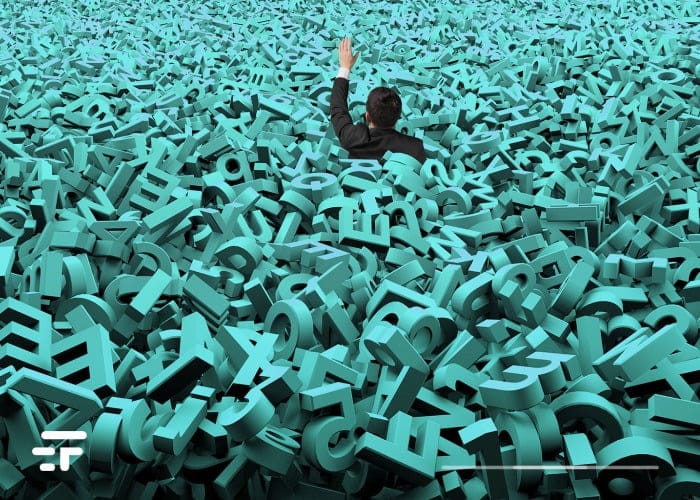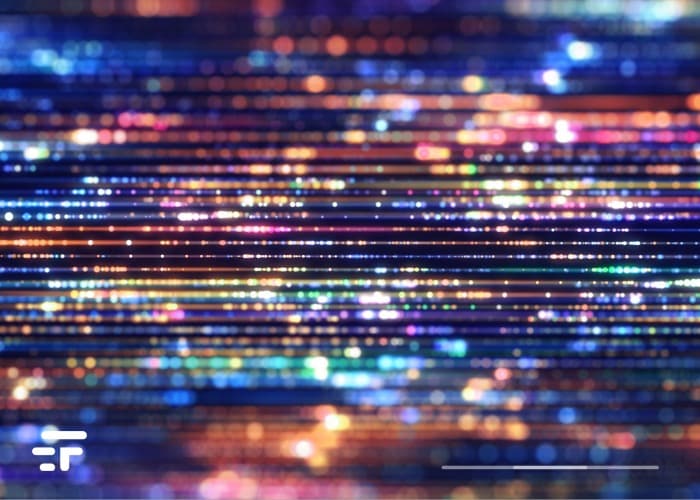We are all now immersed in an overload of information, and for the physical Melvin Vopson from the University of Portsmouth this goes double. The English researcher is in fact trying to demonstrate a suggestive thesis: information has a physical presence. Digital data would matter. It's a difficult task, which could give us new insights into how to store information in the future, but it's not just that.
It could also trigger a major paradigm shift in the way we view the entire universe.
Does the information have a measurable mass?

Vopson, a scholar of information theory, is looking for colleagues to carry out an experiment which, if successful, would produce gigantic effects.
In essence, it is a question of confirming that elementary particles have measurable mass. How? With a process of matter-antimatter annihilation: by throwing a beam of positron (positively charged) against electrons in a sheet of metal (negatively charged). For Vopson, this process should create energy equivalent to the masses of the two particles, and something more: two infrared photons. They would be the direct result of the cancellation of the information contained in the particles.
Do we need an LHC-type accelerator? “No,” Vopson says. “We would have to slow down the positrons: challenging, but not impossible.” The infrared photons, the "proof" of the experiment's success, would be immediately recognisable, says the scientist.
A new concept of matter
The thesis of mass-energy-information equivalence principle proposed by Vopson in 2019 is the basis of this experiment. According to this thesis, for example, by deleting a terabyte of data from a hard disk, the latter would not only become "lighter" in information, but would also lose a real measurable physical mass. A small mass, sure. In his case it would be 2,5 × 1025 kilos. More or less that of a proton.
These ideas of mass-energy equivalence are not new, however. Most scientists agree that the observable universe has a specific information content. The combined masses of basic atoms containing protons, electrons, and neutrons – as well as their tiny mass requirements to interact with each other and with the rest of the cosmos – are contained in typical atoms. This type of information could be considered the “DNA” of particles, according to Vopson's paper.
In summary, if the experiment proposed by Vopson succeeded, it would demonstrate the existence of information as the fifth state of matter in the universe, together with solid, liquid, gaseous and plasma.
“It would be confirmation that our universe is mathematical: that there is a direct connection between mathematics, computer science and the physical world,” says Vopson. “This can fundamentally transform the way we look at everything. It would be the missing link in many phenomena, including those of dark matter and dark energy.”
Practical aspects of research on information as the 5th state of matter

The first digital storage device was the magnetic hard drive, created in 1956. Encodes information as binary data into ones and zeros, or bits (eight bits make up a byte).
Today, the amount of data we have access to today is astounding.
in 2020, the total amount of data “created, acquired, copied and consumed worldwide” was 59 zettabytes. A zettabyte is 8.000.000.000.000.000.000.000 bits.
Within the 2025 is expected than this amount it will grow to 175 zettabytes. In other words, we are creating new information at such a staggering rate that in 350 years we will have more digital bits than all the atoms on Earth, a theory that researchers like Vopson call “the information catastrophe “. In about 110 years , “the power required to support this digital production will exceed the current energy consumption of the entire planet.”
The question is: what can be the smallest size of digital bits? According to Vopson (in a paper of last month), the smallest theoretical size of digital bits should be that of elementary particles, the smallest building blocks of matter known in the universe. Proving this thesis through physical experiments would be the first step towards solving the problem of explosive information growth.

It's a singular implication
Confirmation that information is the fifth state of matter would also lead to a consequence hypothesized by several scientists: that the universe is actually a computer simulation. If information is truly a fundamental element of the cosmos, it is equally possible that our entire world is managed by an intelligent machine (or entity) somewhere.


